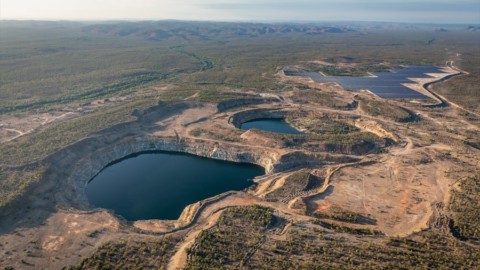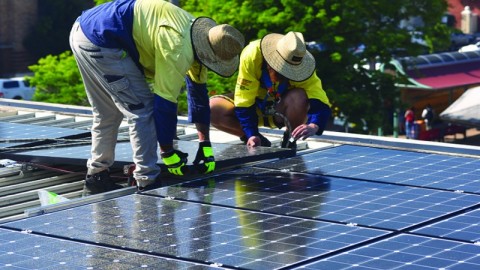Resilience has been a buzz word in the infrastructure industry for quite a while now. But what do we actually mean when we talk about resilient cities? We spoke to Toby Kent, Chief Resilience Officer at City of Melbourne, about why cities need to have a resilience focus, and the benefits that flow when this approach is adopted.
Toby Kent is very well known in resilience circles – he has created and implemented resilience and sustainability strategies across a range of sectors; and since the late 1990s he has worked with governments, communities, industry sectors and many other stakeholders on five continents.
He’s currently the Chair of the Future Business Council and has been Melbourne’s Chief Resilience Officer for just short of five years.
In his current role with Resilient Melbourne, he has been tasked with improving the resilience of not just the City of Melbourne local government area, but the entire metropolitan region in Melbourne, which encompasses 32 local government bodies.
According to Mr Kent, the core function of a city Chief Resilience Officer is to understand the chronic stresses that affect the city, either currently or in the future, to put in place actions that can either entirely avoid things going wrong, or at least minimise them, and be better prepared to be able to recover when things do go wrong.
Building on this, 100 Resilient Cities established a definition, which Mr Kent also uses to guide his work, of the seven qualities of resilience. The identification of these qualities drew upon decades of research to establish a definitive list.
The qualities are as follows:
- Reflective – cities use past experience to inform future decisions
- Resourceful – they recognise alternative ways to use resources
- Inclusive – cities prioritise broad consultation to create a sense of shared ownership in decision-making
- Integrated – they bring together a range of distinct systems and institutions
- Robust – they have well-conceived, constructed and managed systems
- Redundant – they feature spare capacity purposefully created to accommodate disruption
- Flexible – cities have a willingness to adopt alternative strategies in response to changing circumstances
“The important thing with resilience is about understanding that it permeates every single element of a city or organisation,” Mr Kent said.
“There is a massive preparedness element to resilience – of preparing a city, environment or organisation to cope with any chronic stresses that it might face.”
Chronic stresses versus acute shocks
At Resilient Melbourne, Mr Kent’s role focuses a lot on chronic stresses and considering how they interplay with acute shocks.
Chronic stresses are often defined as ‘slow moving disasters’, circumstances that, unaddressed, weaken the fabric of a city over time.
This includes things like climate change, high unemployment, high levels of inequity, over-burdened or inefficient public transportation, and chronic food and water shortages.
Acute shocks on the other hand are sudden, sharp events that threaten a city, including extreme heat, floods, disease outbreaks and cyber attacks.
The distinction is an important one to make, and it exists for a pretty simple reason. The reality is, Melbourne already has some of the best services and organisations in place to deal with acute shocks.
But when it comes to the way the city prepares for and deals with chronic stresses, there is room for improvement – which is where Mr Kent and his team come in.
One of the projects that Mr Kent and his team are working on is the Urban Forest Strategy, which will address some of Melbourne’s chronic stresses, including mental and physical well-being and a loss of natural habitat.
But in addition to this, the forest will see Melbourne using trees and other vegetation to reduce the urban heat island effect and reduce flooding.
“This is what we get really excited about,” Mr Kent said. “Putting something in place which might achieve one outcome, but can also have a range of flow-on benefits for the city.”
This leads into another important aspect of the work, which is to look for ways to frame resilience-improving initiatives for the city in a positive way.
“A large part of what we do is to try to understand how we can take action in a way that is framed positively, rather than simply framing it negatively, which automatically creates a degree of fear and anxiety, and hence denial or resistance amongst people,” Mr Kent said.
“It’s important that through our work, we actually create a vision of something that is appealing. A lot of what we do becomes about how we shift mindsets and understanding.”
Preparing for disaster, not just reacting
With Mr Kent spending a lot of his time looking at how we can be better prepared for the different events that might affect a city, he says there is considerable opportunity to invest further at this stage of the disaster cycle for improved outcomes.
“At present, 97 per cent of disaster spending is spent post-fact, when really, that same amount of money should be starting to be invested upfront,” notes Mr Kent.
“By way of example, if we took some of the money we spend in bushfire recovery and invested more of that in burying cables, we would likely be in a better place.”
The reality is, when it comes to resilience, there’s a lot we can be doing to improve our approach at an organisational and city level.
But for Mr Kent, the key is to view these areas for improvement as opportunities to make our organisations and cities happier, healthier and safer spaces to move around in.
“What we want in our society and in our infrastructure is a really healthy mix of diversity of all types. Different sources of energy, alternative modes of transport, different systems on a range of levels, so that when something goes wrong it can be isolated and dealt with, rather than spreading impacts further than they need to go.”
At its core, it’s this capacity for diversity which can make our cities and systems more resilient; and this will be the space where forward-thinking resilience and disaster managers will achieve some of their best outcomes.
Toby Kent is the keynote speaker at Disaster Management, a two-day event taking place in Melbourne from November 21–22, looking at the ways critical infrastructure owners and local governments can better prepare for, survive and thrive in the face of major disaster events. For more information, head to disaster-management.com.au


















